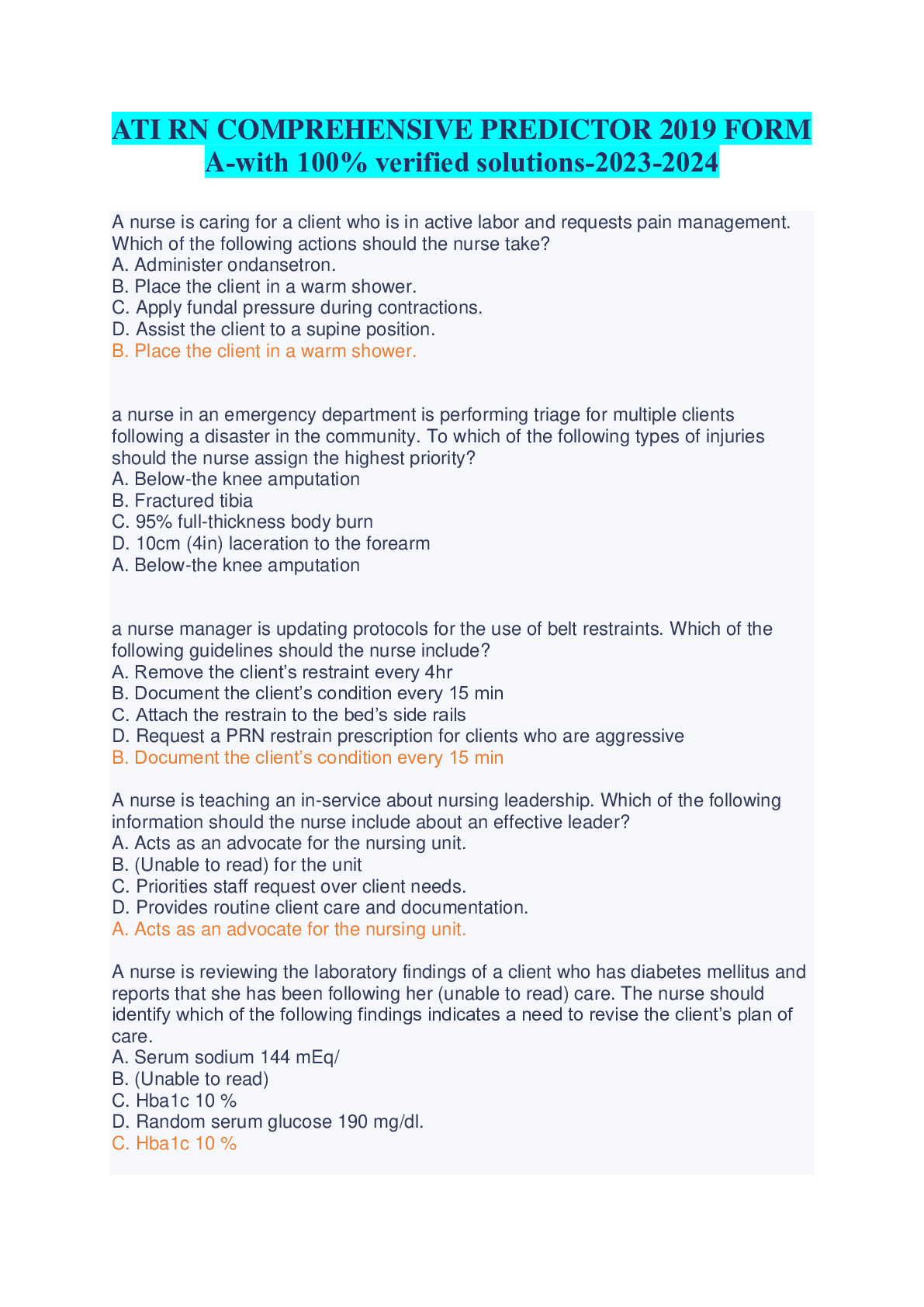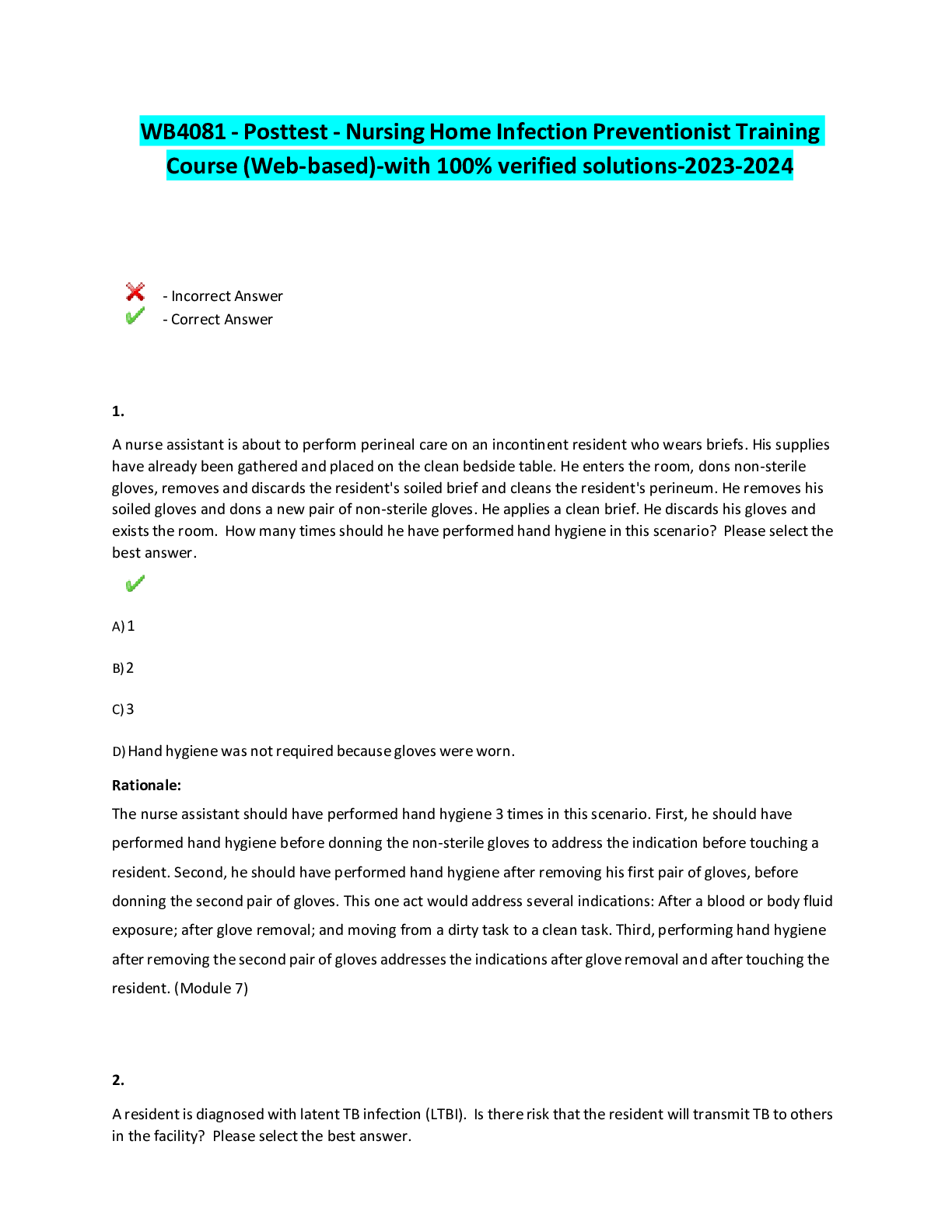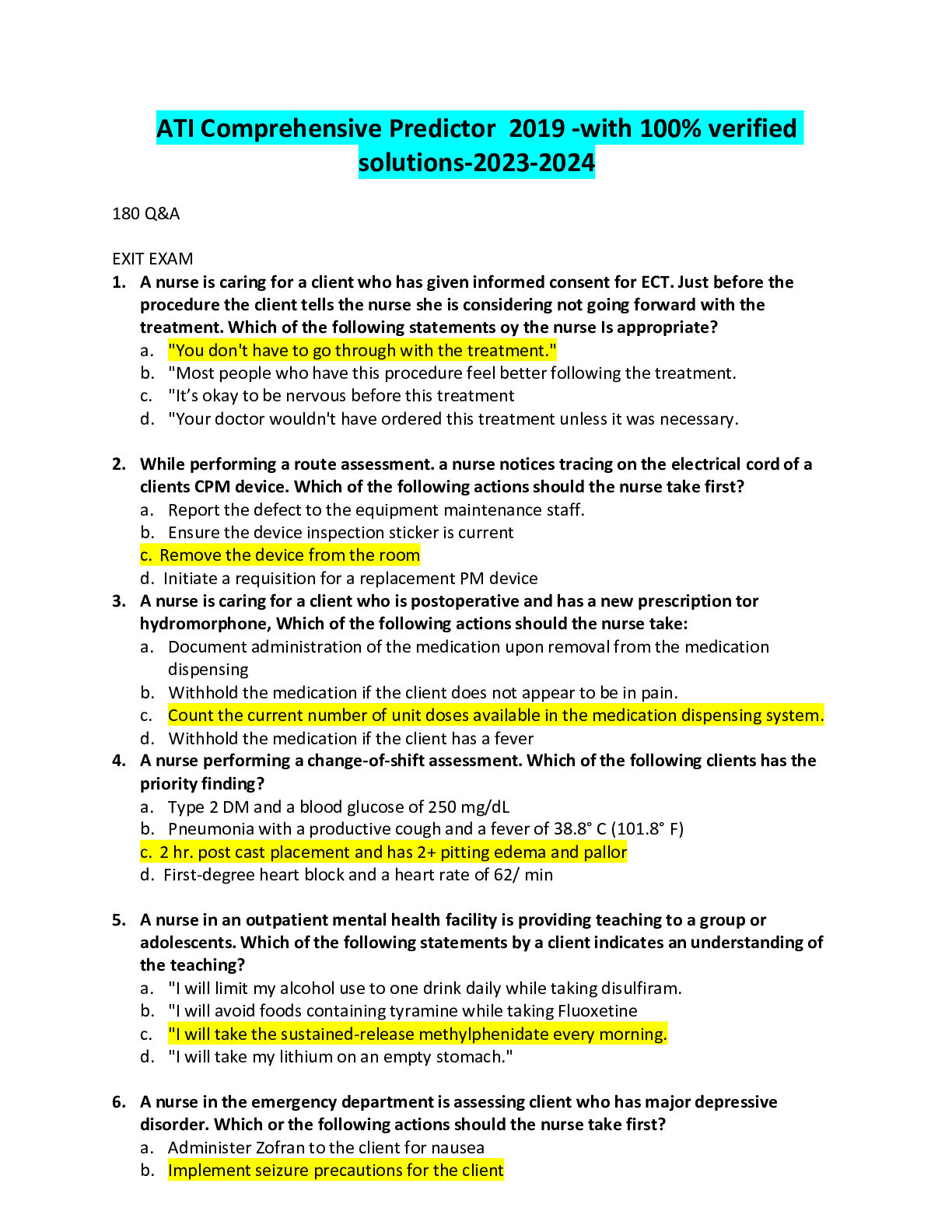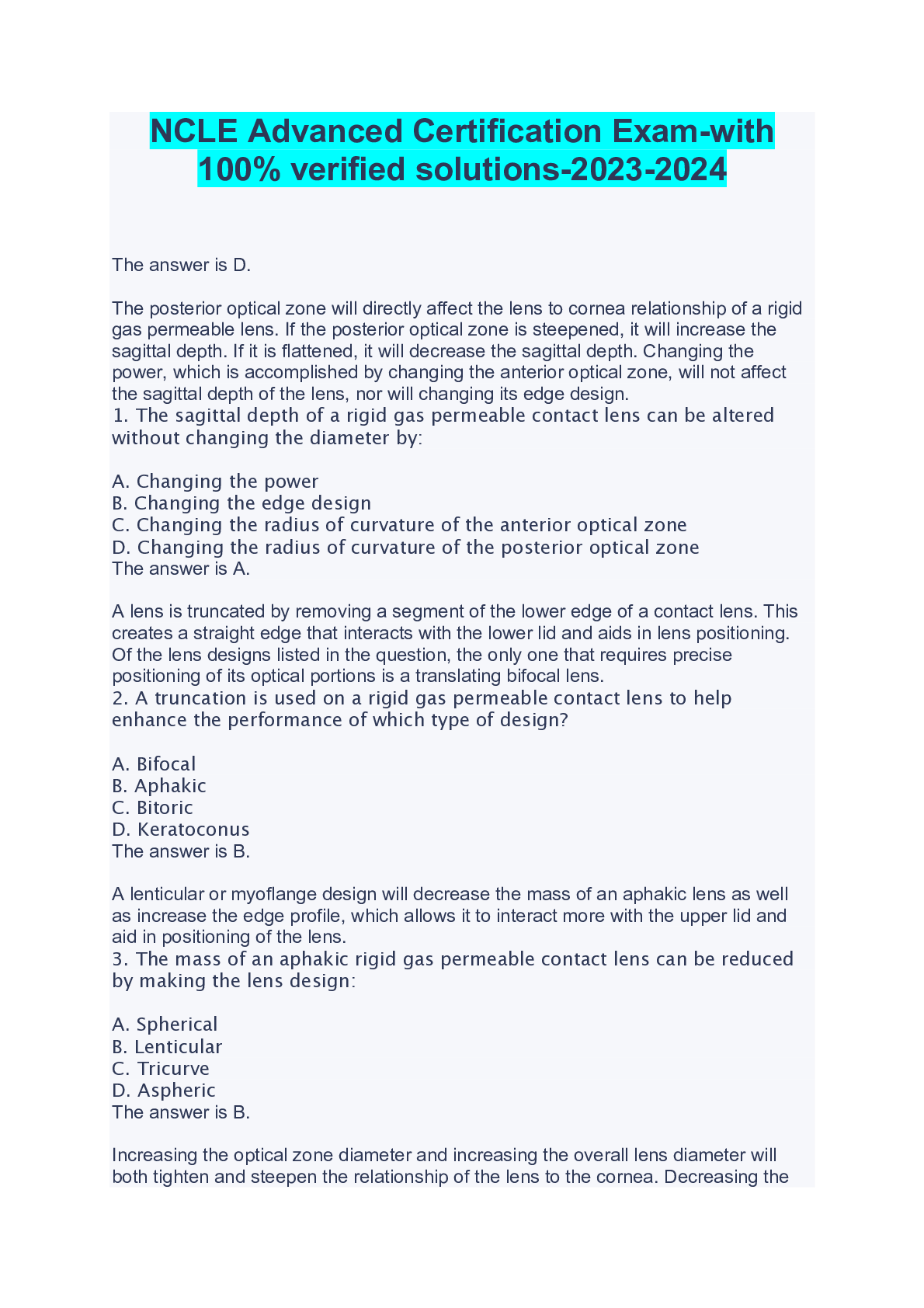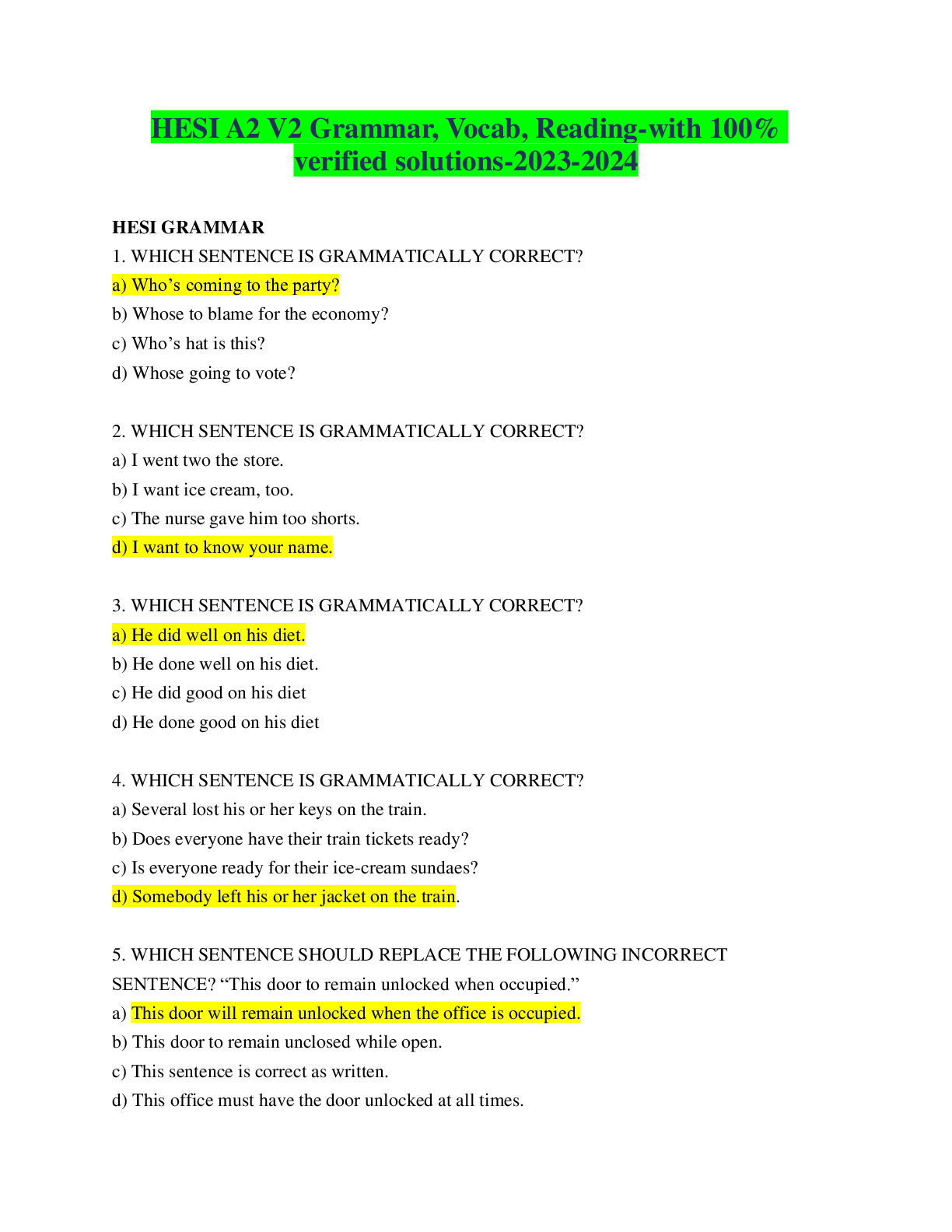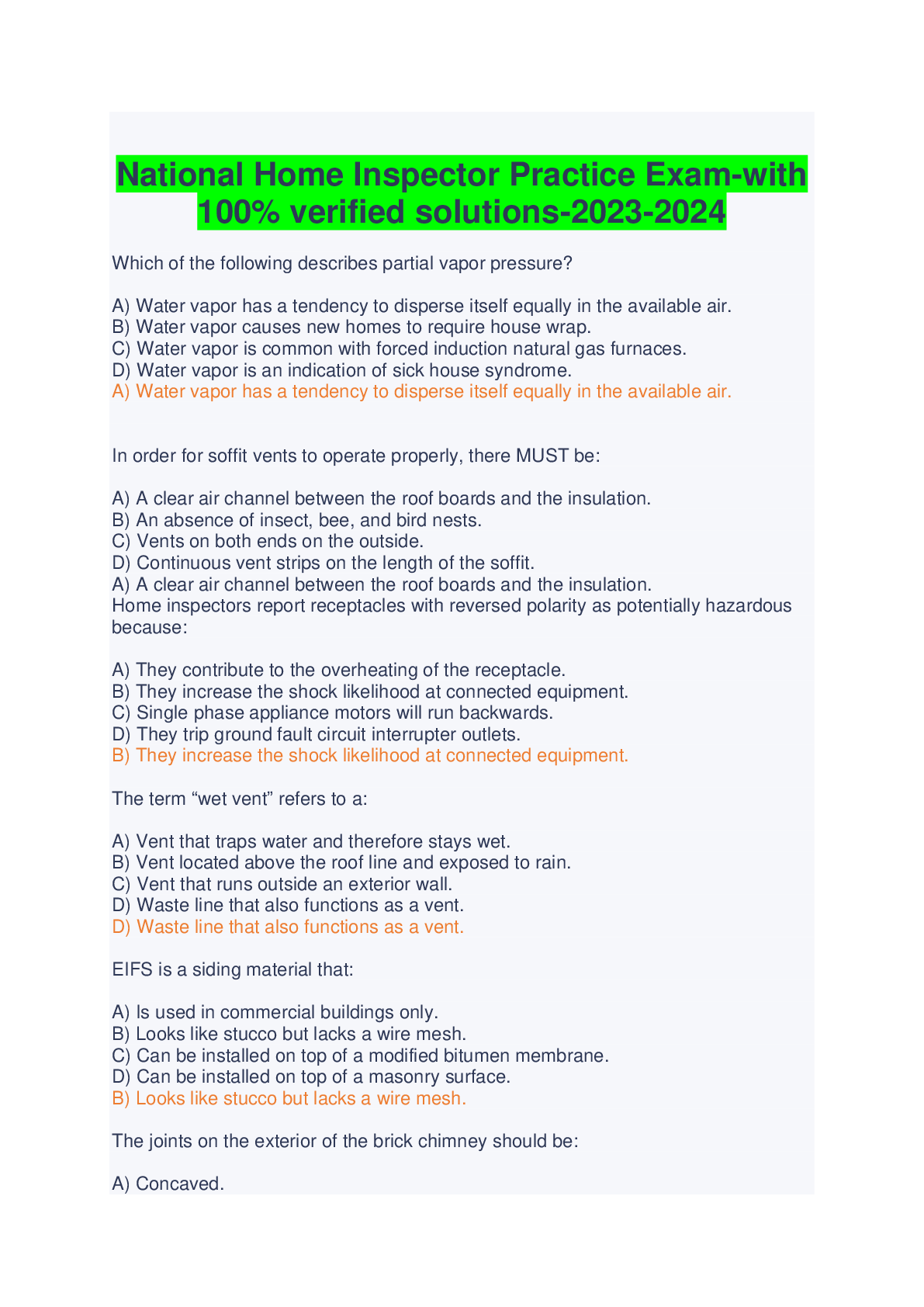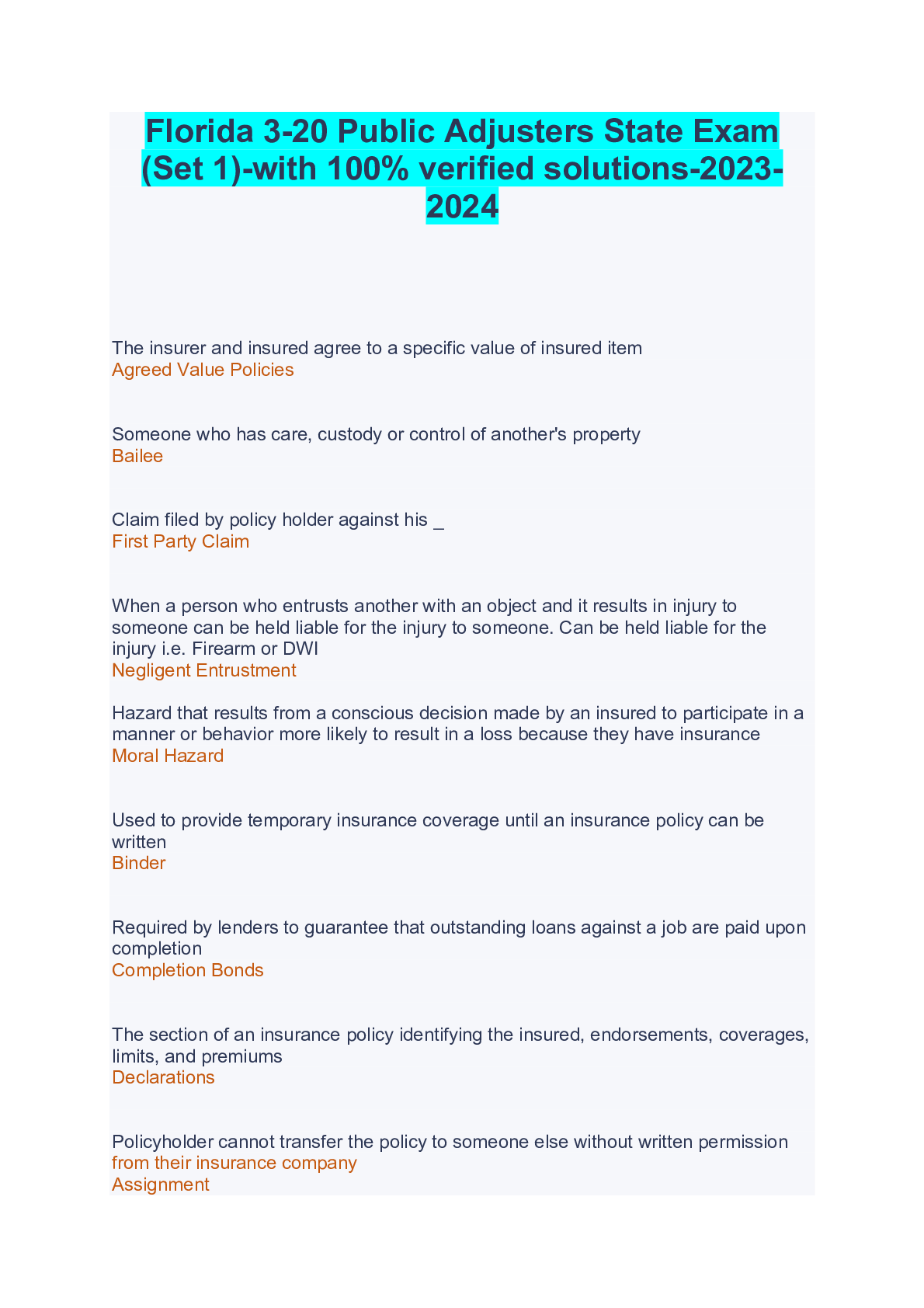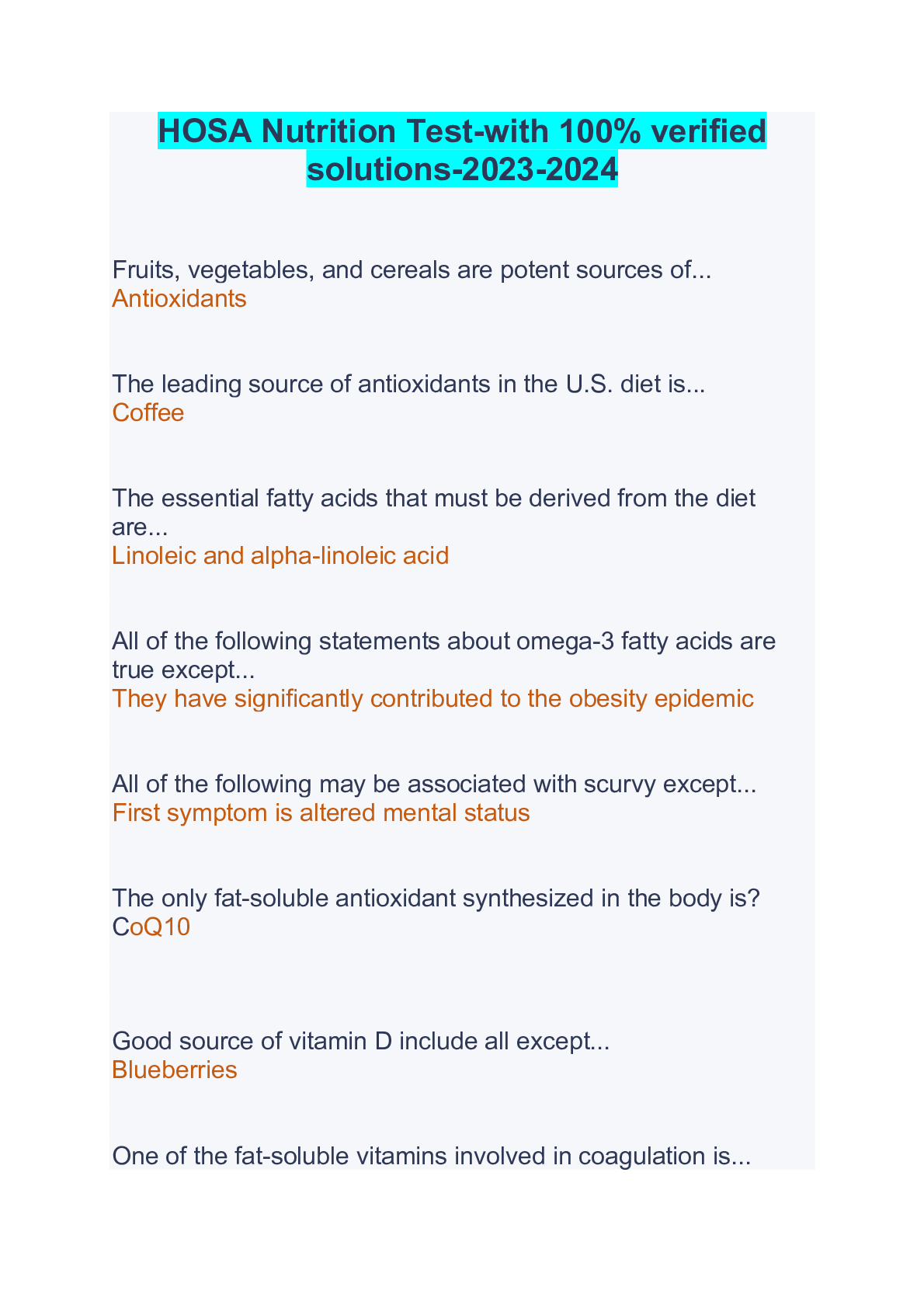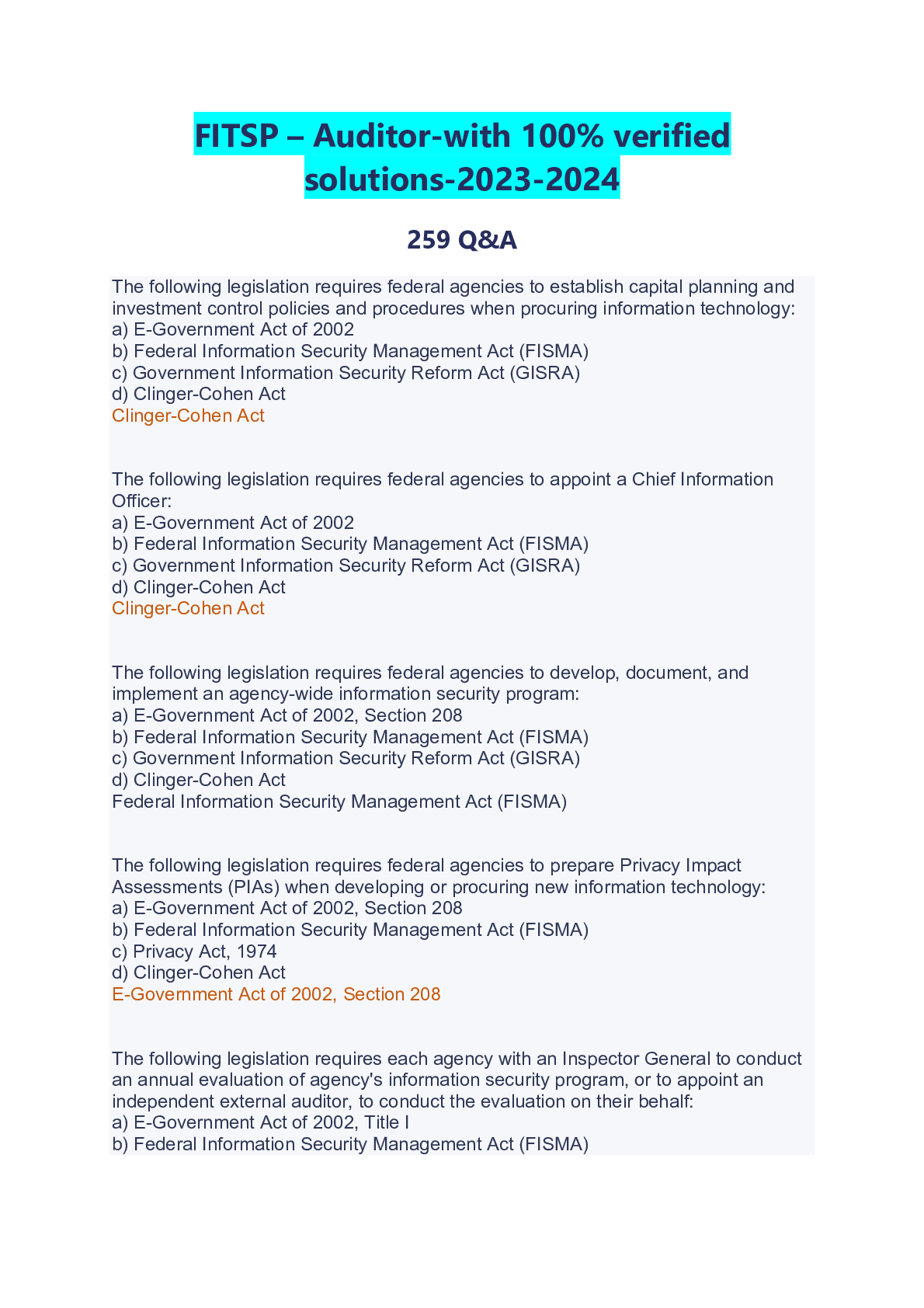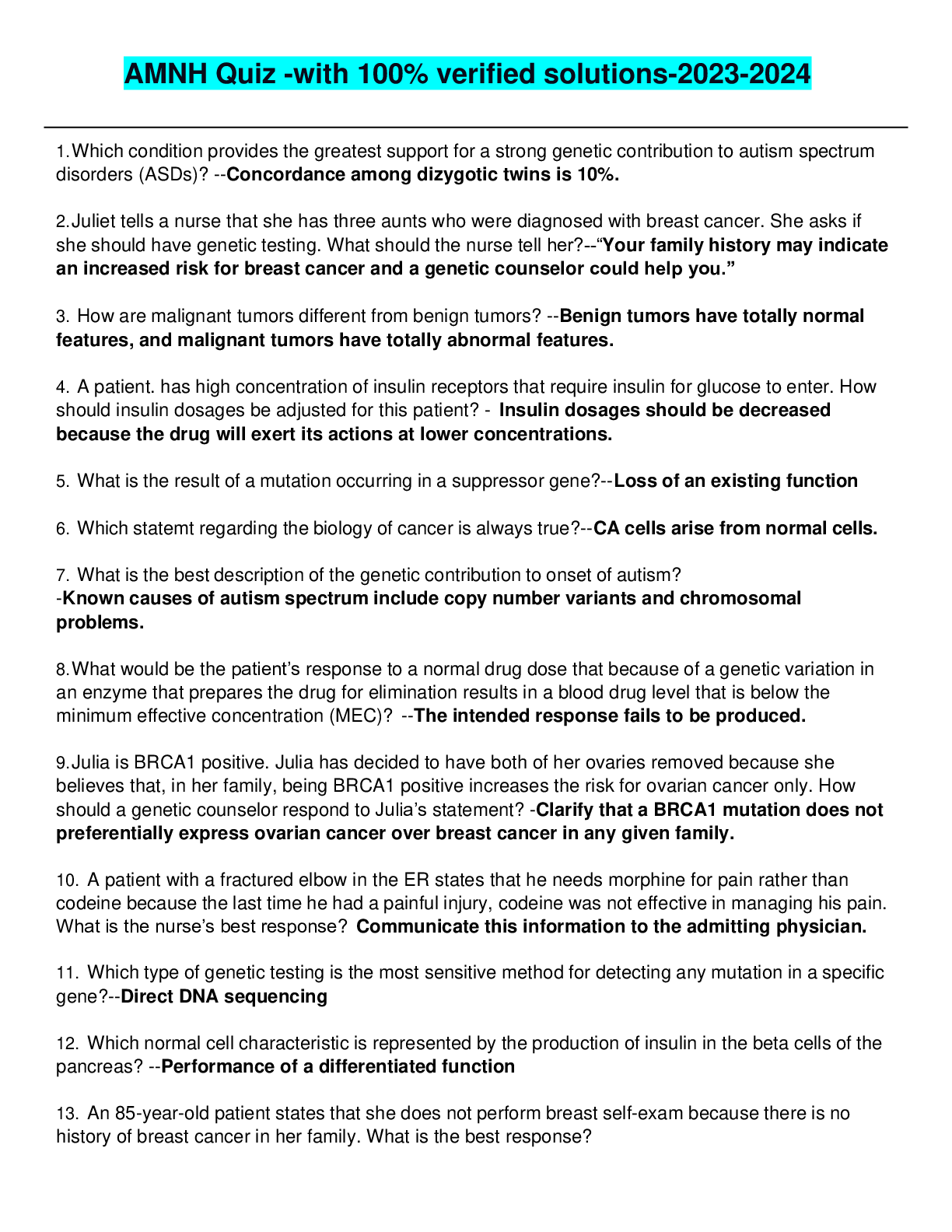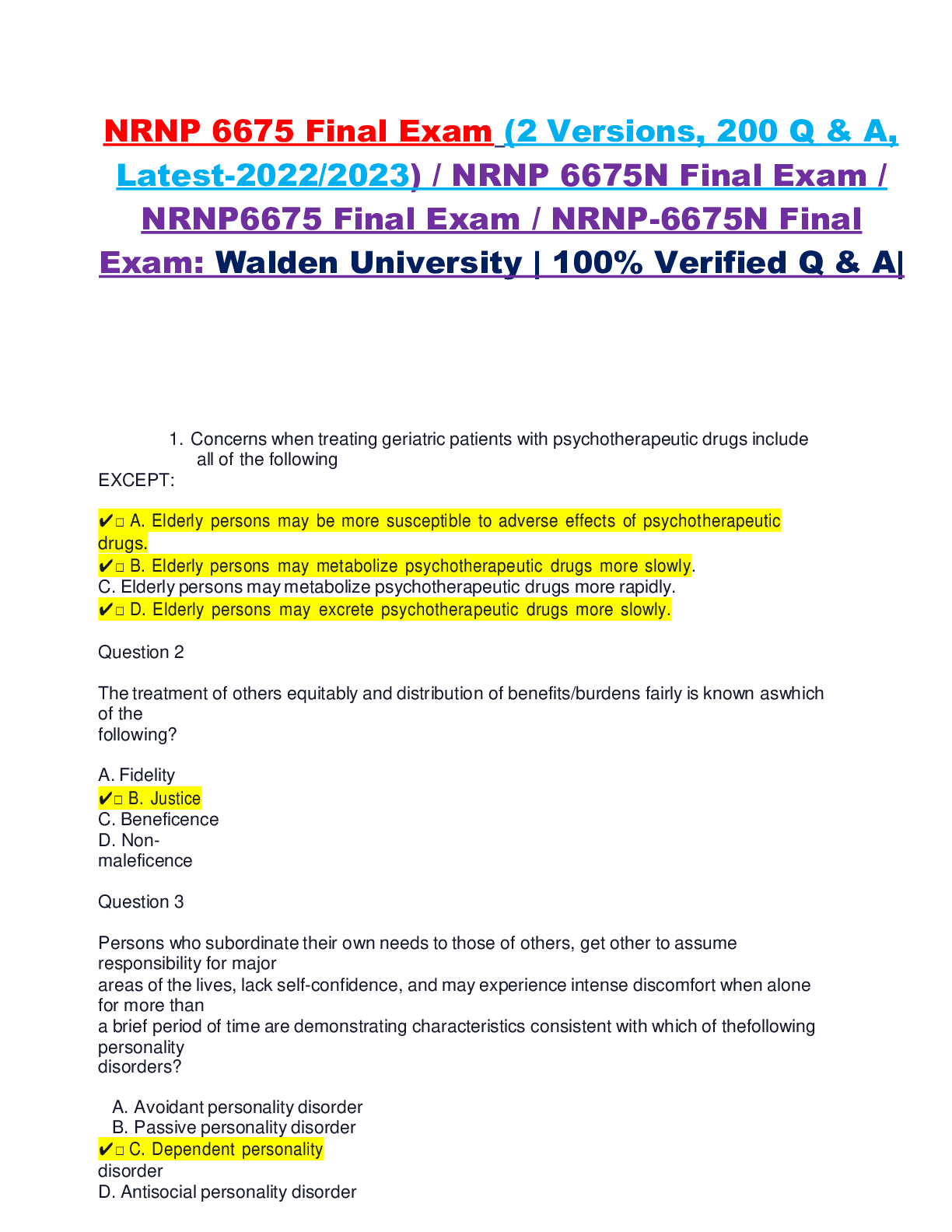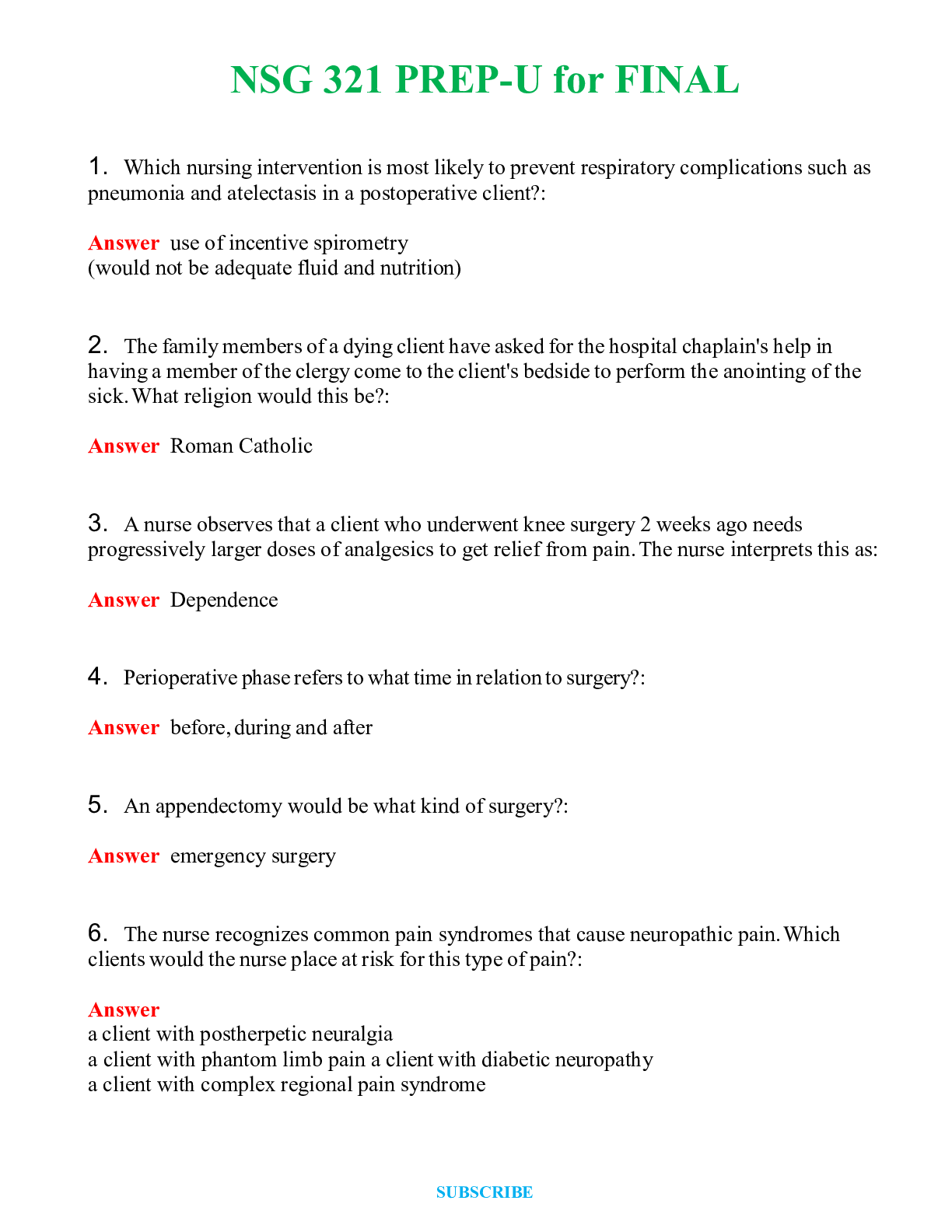NUR 372-medical surgical exam -with verified answers-2022
Document Content and Description Below
1.A 60-year-old male client comes into the emergency department with complaints of crushing substernal chest pain that radiates to his shoulder and left arm. The admitting diagnosis is acute myocardia... l infraction (MI). Immediate admission orders include oxygen by nasal cannula at 4 L/minute, blood work, a chest radiograph, a 12-lead electrocardiogram (ECG), and 2 mg of morphine sulfate given intravenously. The nurse should first: a. Administer the morphine b. Obtain a 12-lead ECG c. Obtain the blood work d. Order the chest radiograph Ans: A – although obtaining the ECG, chest radiograph, and blood work are all important, the nurse’s priority action should be to relieve the crushing chest pain. Therefore, administering morphine sulfate is priority action. 2. When administering a thrombolytic drug to the client experiencing an MI, the nurse explains to him that the purpose of the drug is to: a. Help keep him well hydrated b. Dissolve clots that he may have c. Prevent kidney failure d. Treat potential cardiac dysrhythmias Ans: B – thrombolytic drugs are administered within the first 6 hours after of myocardial infarction to lyse clots and reduce the extent of myocardial damage. 3. If the client who has admitted for MI develops cardiogenic shock, which characteristic signs should the nurse expect to observe? a. Oliguria b. Bradycardia c. Elevated blood pressure d. Fever Ans: A – oliguria occurs during cardiogenic shock because there is reduced blood flow to the kidneys. Typically signs of cardiogenic shock include low blood pressure, rapid and weak pulse, decrease urine output, and signs of diminished blood flow to the brain, such as confusion and restlessness. Cardiogenic shock is a serious complication of MI, with a mortality rate approaching 90%. Fever is not a typical sign of cardiogenic shock. 4. The physician orders continuous intravenous nitroglycerin infusion for the client with MI. essential nursing action include which of the following? a. Obtaining an infusion pump for the medication b. Monitoring blood pressure every 4 hours c. Monitoring urine output hourly d. Obtaining serum potassium levels daily Ans: A – intravenous nitroglycerin infusion requires an infusion pump for precise control of the medication. Blood pressure monitoring would be done with a continuous system, and more frequently than every 4 hours. Hourly urine outputs are not always required. Obtaining serum potassium levels is not associated with nitroglycerin infusion. CONTINUED........ [Show More]
Last updated: 1 year ago
Preview 1 out of 64 pages
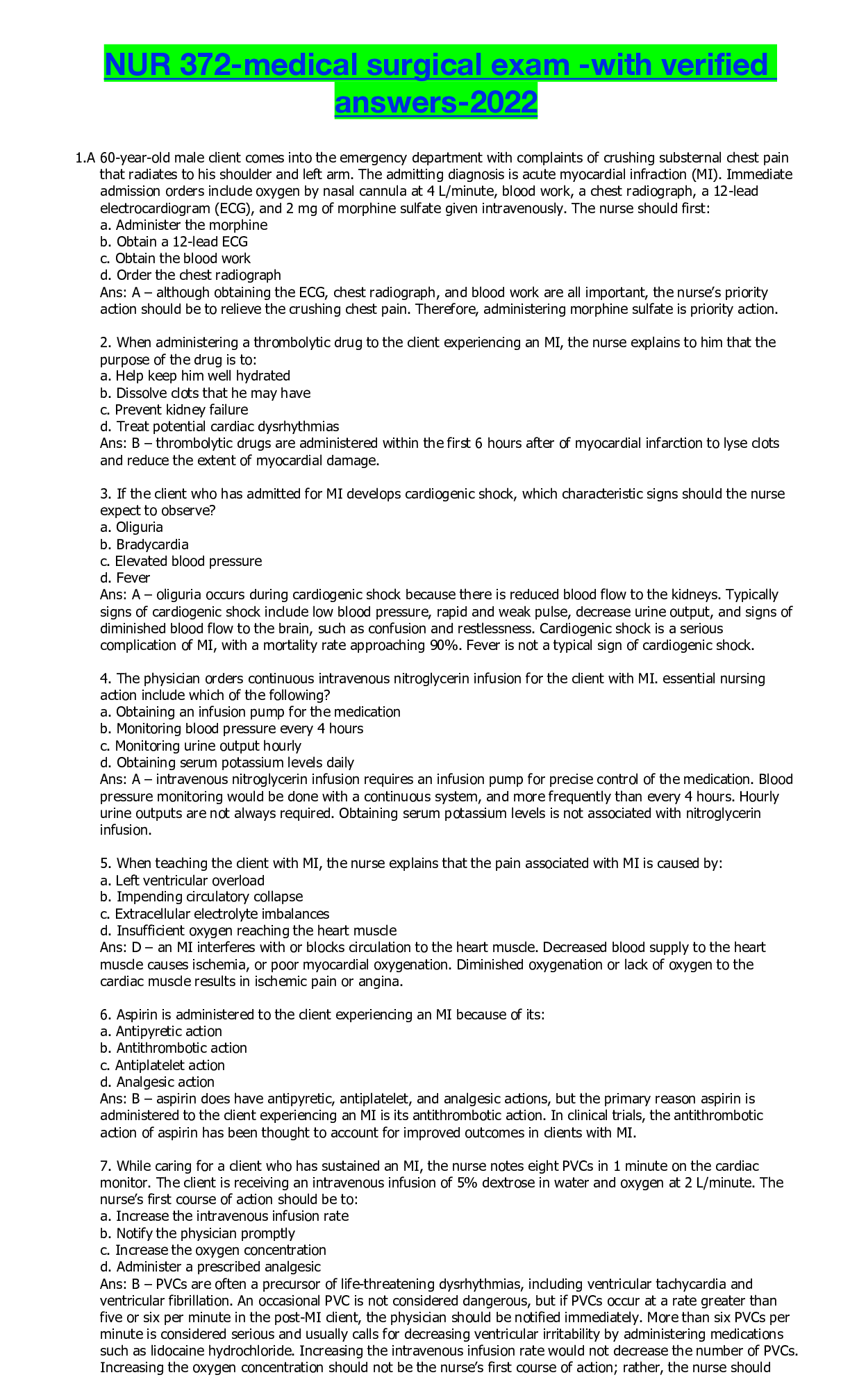
Reviews( 0 )
Document information
Connected school, study & course
About the document
Uploaded On
Jun 08, 2022
Number of pages
64
Written in
Additional information
This document has been written for:
Uploaded
Jun 08, 2022
Downloads
0
Views
55



